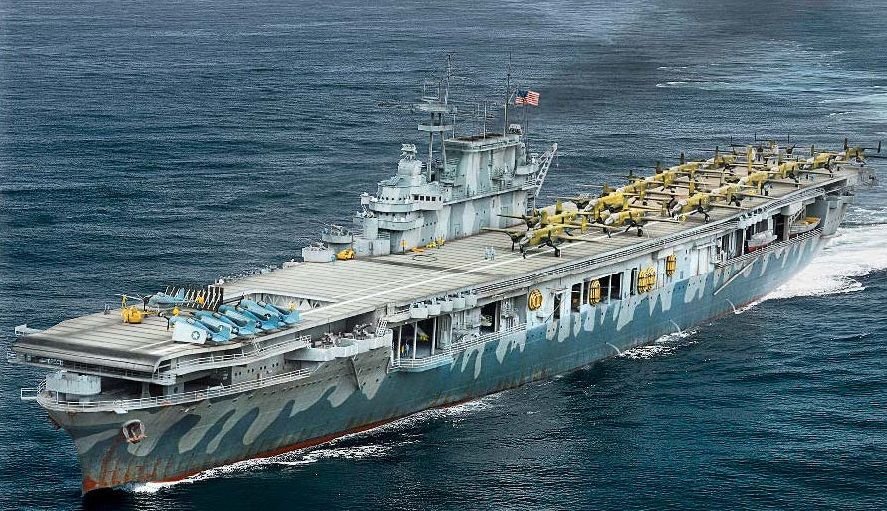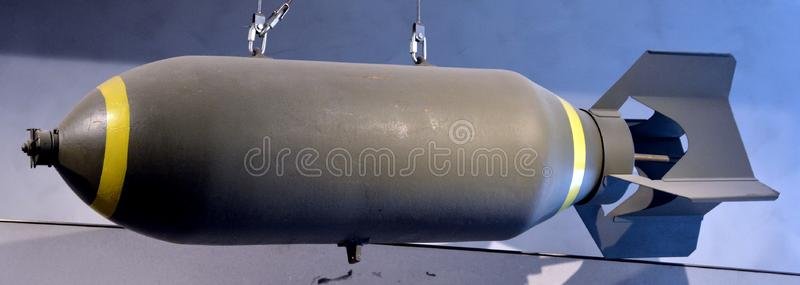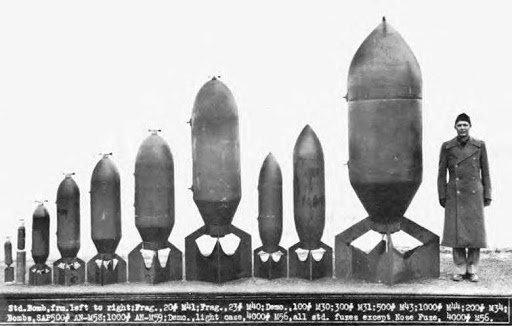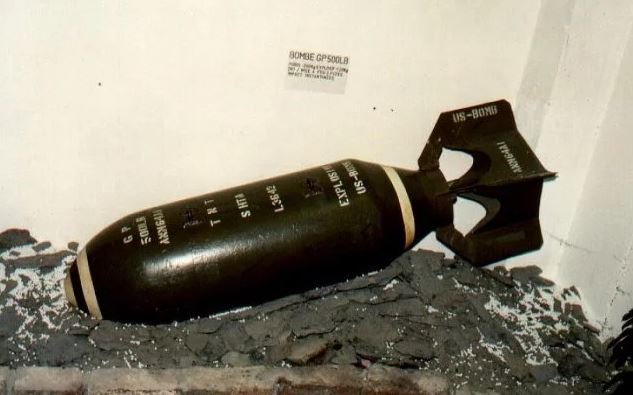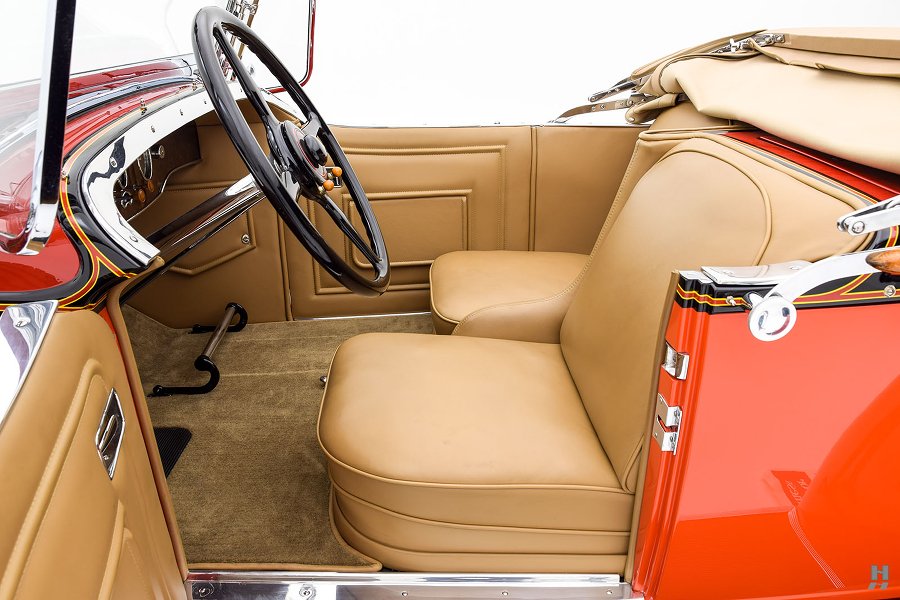-
Posts
4,382 -
Joined
-
Last visited
Content Type
Profiles
Forums
Gallery
Events
Everything posted by Egilman
-
When Browning first designed the ma duce, (based upon the very successful M-1918 .30 cal) the army ordered it tested in continuous fire until destruction.... any one care to guess how many rounds went down range before it finally decided to quit firing? .......... 32,687 before the action finally broke...... (the barrel of course was destroyed long before the action quit) It is considered the most reliable gas operated heavy machine gun ever manufactured.....
-

B-25J Mitchell by Tom E - Revell - 1:48 Scale - PLASTIC
Egilman replied to Tom E's topic in Non-ship/categorised builds
Those are mk 65 bombs..... originally designed in 1939 for the USAAF they were the general purpose design used throughout WWII and Korea, they were also used in Vietnam when the supply of Mk 80 bombs got low cause they were dropping them faster than they could make them..... It is an overall OD color with two yellow stripes fore and aft... fuses (there were three, nose contact, tail contact delay, and side radio altimeter) are colored steel or aluminium during WWII of painted green in Korea and Vietnam... the contact fuses were installed safed and had propellers that spun to activate them as they fell. they had two circular screw-in lugs on one side for hoisting and mounting into the bomb dispensers/racks They did come in various sizes and marks for different purposes, but the design was basically the same Mk 65 throughout WWII.... An example of a 500lb GP bomb from WWII... They still find several of these in Germany each year ranging from 250 lbs to 4000lbs.... unexploded..... -

1931 Cadillac by CDW - FINISHED - JoHan - 1:25 Scale - PLASTIC
Egilman replied to CDW's topic in Non-ship/categorised builds
That green is going to sparkle under a high gloss finish.... I like it..... -
The Avia S-199's were actually built immediately postwar..... When Israel flew Nazi Planes Quote: 'The Avia S-99s & S-199's was constructed with parts and plans left over from Luftwaffe aircraft production that had taken place under the country’s German occupation of Czechoslovakia during the war." Were they made by the Nazi's? no, designed by a Nazi for the Nazi's yes.... Does a name change, change where they were created/originated from? or, what they were? Not in my opinion.... Not faulting the Israelis, they needed weapons and at that point in time the world was conspiring against them getting what they needed expecting the arabs to make short work of the jews... They couldn't get the proper engines for them because of the arms embargo so they obtained surplus Heinkel engines and props for them.... Made it a widow maker in service and quickly withdrawn when better aircraft became available...... they not only scored victories against Egyptian C-47's (modified into bombers) but over Syrian Spitfire's and Egyptian Mustangs...... Impressive if you ask me....
-
Thank you my friend.... I thought it was, as proposed, the chrome look was just too much.... so I figured to cut the metalized look by giving it layers that look normal to pull the eyes away from the rather drab look of all metal.... It's ok now, but wait til I get done with it..... My pleasure, and the paint I stripped was only on there for a day and a half, older paint might take a bit more time... But, it does work. And thank you for your comment..... Thank you all EG
-
I don't know why they gave all the extras, probably for the people..... (Historical note: they should all be wearing the leather tanker helmet when in the tank, the reason is the steel pot was too large to wear while in the tank, it kept clunking into things. Eventually, most crews just ditched them)
-

Aston Martin DB5 by Fnick - FINISHED - Revell - 1:32
Egilman replied to fnick's topic in Non-ship/categorised builds
Wow the old Airfix by Craft Master kit.... VERY COOL! Is this the one with the operating parts? (like the ejection seat?) -

Bell UH-1H Huey By lmagna - Dragon - 1/35 - PLASTIC
Egilman replied to lmagna's topic in Non-ship/categorised builds
Just a note, from the factory, (Bell Helicopter) the dash panels were grey, same grey as the rest of the interior..... They were painted black by the receiving station/unit on the order of the commanding general that felt they would be better black..... (less glare or some such opinion) And there are lots of examples that not all of them got painted... Looks spot on to me....... -
Here is an example of stripping enamel paint with super clean.... I was going to go with an interior approximately this color..... Kinda goes well with the body work doesn't it? but since mine is going to be red & silver this is too light.... But I had already painted the cockpit and the drivers seat, so it needs stripping.... After 12 hours bath, most is now loose and could be brushed off.. but I'm going to leave it for another couple of hours while I decide what tone I want the Leather to be, probably a more deeper brown toned leather.... A lot of these cars had a black interior, or white interior, and neither of those appeal to me. They were manufactured in any interior finish the customer wanted, with color matched carpet and leather seats & door panels.... I have leather paint and a few other colors... still considering it...... But it's confirmed Super Clean does remove paint albeit a bit slower than chrome....
-
In 1/35th the difference will be probably a half a millimeter....... And I'm sure the crew would know it was an awesome weapon since they probably had to face fire from one at some point... problem with liberating one from your enemy is ammo, you can find an excellent operable weapon, but the ammo is usually gone by the time you acquire it with no resupply available.....
About us
Modelshipworld - Advancing Ship Modeling through Research
SSL Secured
Your security is important for us so this Website is SSL-Secured
NRG Mailing Address
Nautical Research Guild
237 South Lincoln Street
Westmont IL, 60559-1917
Model Ship World ® and the MSW logo are Registered Trademarks, and belong to the Nautical Research Guild (United States Patent and Trademark Office: No. 6,929,264 & No. 6,929,274, registered Dec. 20, 2022)
Helpful Links
About the NRG
If you enjoy building ship models that are historically accurate as well as beautiful, then The Nautical Research Guild (NRG) is just right for you.
The Guild is a non-profit educational organization whose mission is to “Advance Ship Modeling Through Research”. We provide support to our members in their efforts to raise the quality of their model ships.
The Nautical Research Guild has published our world-renowned quarterly magazine, The Nautical Research Journal, since 1955. The pages of the Journal are full of articles by accomplished ship modelers who show you how they create those exquisite details on their models, and by maritime historians who show you the correct details to build. The Journal is available in both print and digital editions. Go to the NRG web site (www.thenrg.org) to download a complimentary digital copy of the Journal. The NRG also publishes plan sets, books and compilations of back issues of the Journal and the former Ships in Scale and Model Ship Builder magazines.

